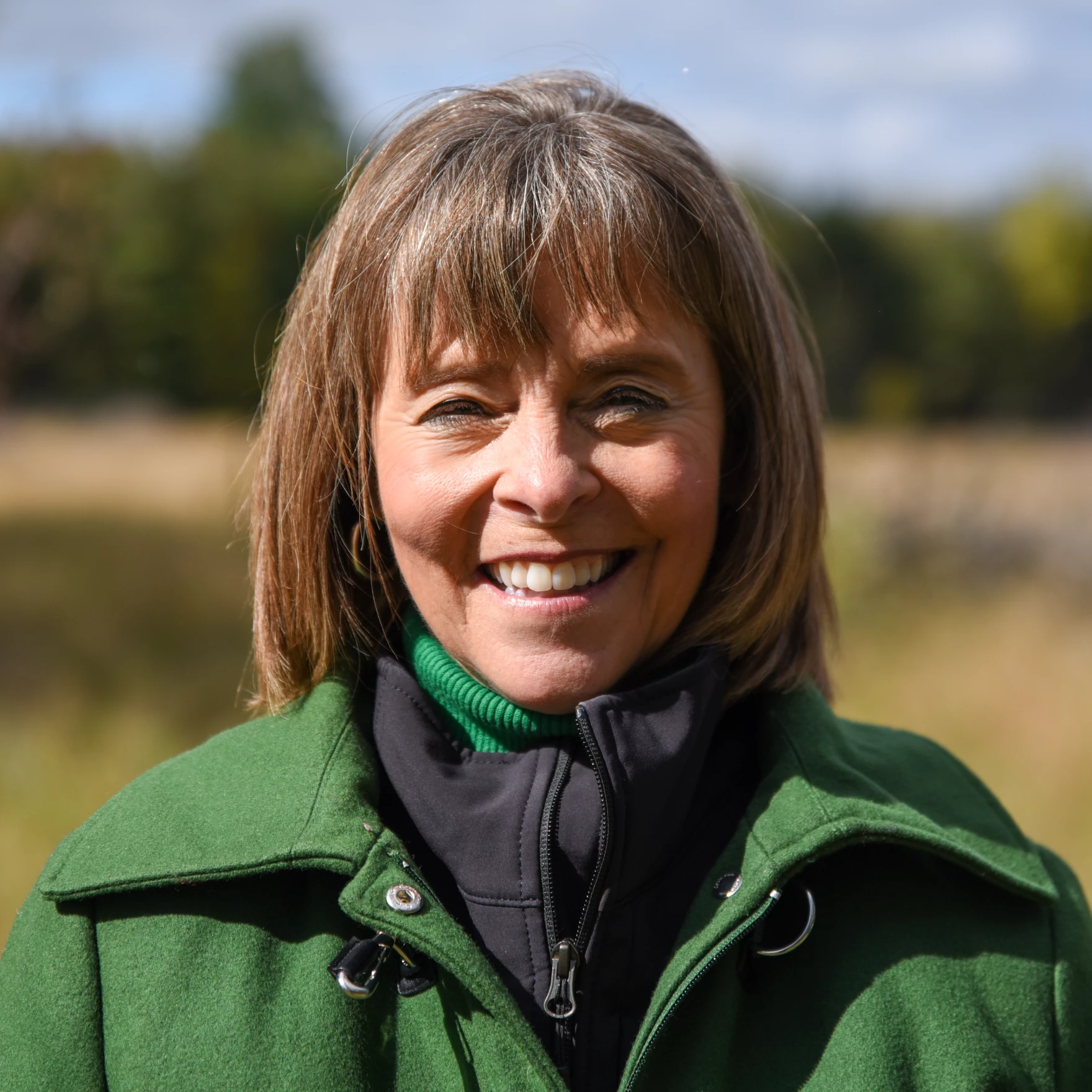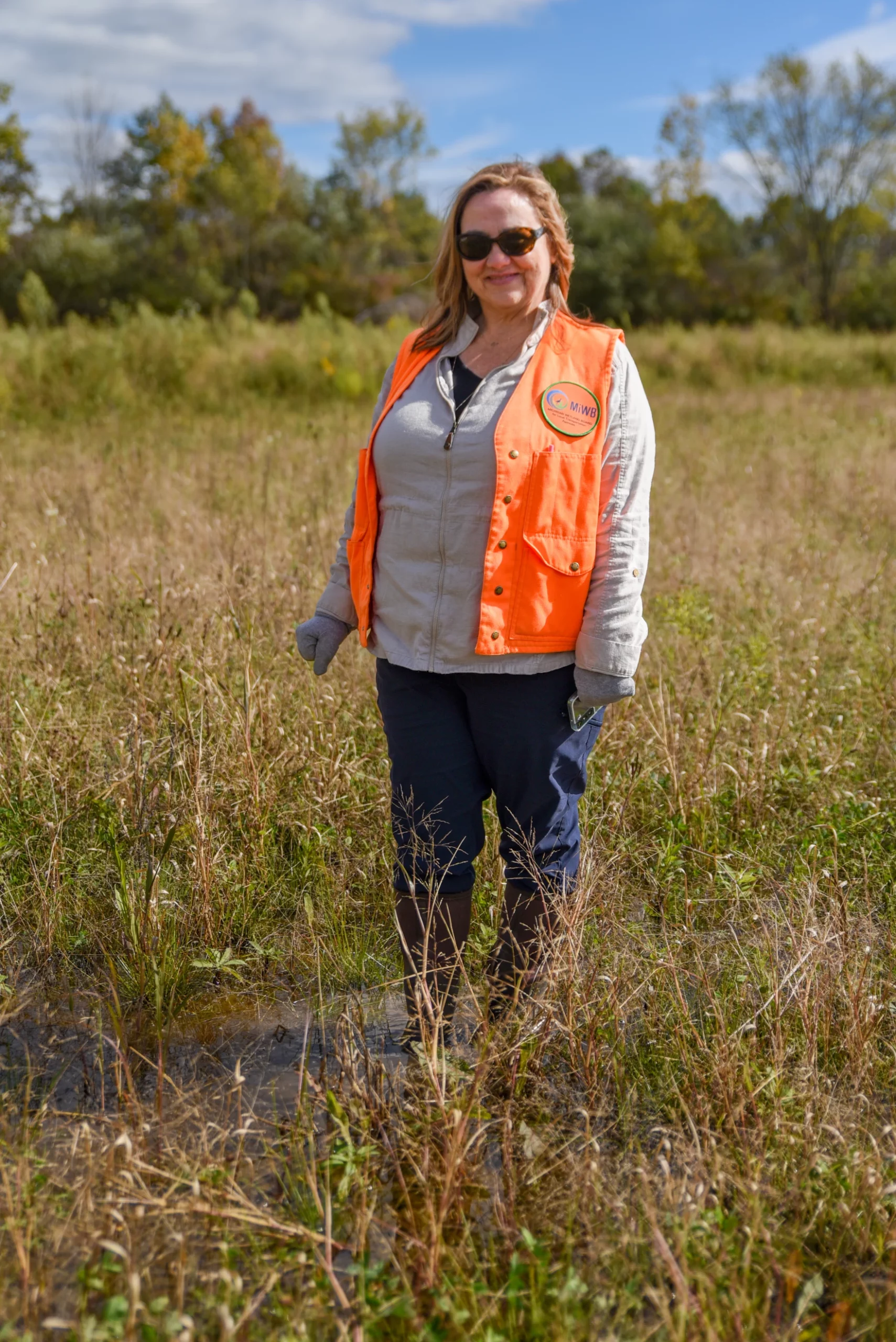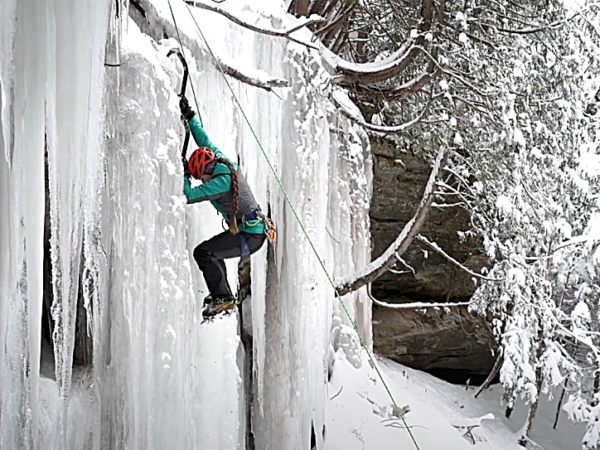
By Lester Graham, Michigan Radio
The Great Lakes News Collaborative includes Bridge Michigan; Circle of Blue; Great Lakes Now at Detroit Public Television; and Michigan Radio, Michigan’s NPR News Leader; who work together to bring audiences news and information about the impact of climate change, pollution, and aging infrastructure on the Great Lakes and drinking water. This independent journalism is supported by the Charles Stewart Mott Foundation. Find all the work HERE.
When a municipality builds a new road and damages wetlands in the process, state law says new wetlands have to be constructed somewhere else. That’s led to establishing “wetland banks” for city, township, and county road agencies.
Monday, a small group of road officials and reporters gathered at the end of a cul-de-sac near Ortonville, in northern Oakland County, where a microphone and speaker were set up with a background scene of a wetland.
“Today, we dedicate our first public transportation wetland bank,” announced Gary Piotrowicz, Deputy Managing Director for the Road Commission for Oakland County.
“It is part of state of Michigan’s wetland bank program. This program utilizes state funds to develop wetland banks that create credits to be used by public road agencies to compensate for wetlands that are disturbed during road projects,” he explained.

This constructed wetland had an advantage over some other sites. It was once a wetland that was drained and turned into farmland. Restoring a wetland means some of the basic elements that make a wetland productive are already in place. (Photo Credit: Lester Graham/Michigan Radio)
Wetland banks are not new. The Michigan Department of Environment, Great Lakes, and Energy has a website on the ins and outs of wetland mitigation banking. The Michigan Department of Transportation has a registry of wetland mitigation banks.
The private sector and non-profits construct them and sell them to contractors and others who need to mitigate wetland destruction. But until recently, city, township, and county road projects didn’t have their own wetland banks.
Road projects that would damage existing wetlands could be held up until officials could identify and buy land to construct wetlands. Or they would have to buy commercially built wetlands at a substantial cost, meaning less roadway per taxpayer dollar.
The state of Michigan passed a law to change that.

Denise Donohue, CEO, County Road Association of Michigan. (Photo Credit: Lester Graham/Michigan Radio)
Denise Donohue is the CEO of the County Road Association of Michigan. She said damage to existing wetlands can occur during some fairly routine road projects.
“Safety standards might require a wider shoulder. Maybe you’re doing a roundabout. And so now we’ve got to add road, and in many cases it’s swampy. Down here in southeast Michigan, you have many, many places where, you know, there are some nice residential lakes that are right up next to roads. And so we’ve got to attempt to mitigate for that kind of on a statewide basis.”
As part of the law, the state established the Michigan Wetland Board. Holly Vickers manages it. She joined me in the back of a small track-driven off road vehicle to take a look at the work that’s been done on this 16 acres of former farmland.
“It’s a good site because it used to be a wetland. We’re able to restore it,” Vickers said. “We have a lot of the soils that were here before are still here and they still have some of the features that are developed in wetlands soils over the years.”
Restoring a former wetland is a big head start compared to some other constructed wetlands sites.
The existing natural wetlands develop over hundreds, sometimes thousands of years. You can’t just dig a wide, wet hole and immediately expect the same benefits.
“There’s clear recognition that you are losing some ecological function and value because you’re starting from scratch. That could be wildlife habitat or even the microbiota in the soils might take time to develop,” said Todd Losee, an ecologist with the company that established this wetland, Niswander Environmental.
Once the hydrological work is done, it’s a matter of making it as natural as humanly possible.
“Plant native plants. So all of our seed mixes are native Michigan plants. We can plant native trees and shrubs. As you can see out here, we have trees, small trees, big trees, shrubs. And then we can install habitat structures like logs and brush piles,” Losee said.
The wetland site even includes a pile of rocks, the kind of habitat salamanders and some reptiles like to call home.
Losee said usually frogs, typically wood frogs, find these new wetlands fairly quickly. Birds stop in during migration. Slowly, the human-built wetland becomes more natural with an assist from wildlife which bring in seeds — hopefully, mostly native seeds.

Holly Vickers with the Michigan Wetland Board gets her boots wet in standing water at the wetland bank to be used by local public road agencies. (Photo Credit: Lester Graham/Michigan Radio)
As we continued our tour of the constructed wetland, Holly Vickers pointed out the dragonflies that were buzzing around native plants. This particular restored wetland is a forested wetland, which is considered especially valuable.
“There’s over 400 trees per acre out here. And, of course, besides what we’ve planted, we’ll also have some voluntary species that will come in like cottonwood that start invading the site on their own,” Vickers said.
She added that building wetlands on the edge of a developing area is also beneficial because it’s permanent. It’s protected by law, preventing it from becoming another subdivision or strip mall.
“As the community grows and the population grows and roads are improved, you have more people taking up more space. And as people take up more space, we lose these habitat places for the wildlife that come,” she said.
And developments often lose places for water to go during heavy rains, which could cause more flooding caused by climate change.
These wetland banks are being established in watersheds around the state. The idea is that as local roads are built or widened within a watershed, the constructed wetlands should be built in the same region, standing in (as best they can) for what is lost in that same region.
Catch more news at Great Lakes Now:
New federal money is the start of an effort to make Great Lakes coasts more resilient
A patchwork of differing state laws to protect wetlands
Featured image: Local and state officials thanked the state of Michigan for launching a program to help local road agencies mitigate wetland destruction more cheaply and easily. (Photo Credit: Lester Graham/Michigan Radio)




